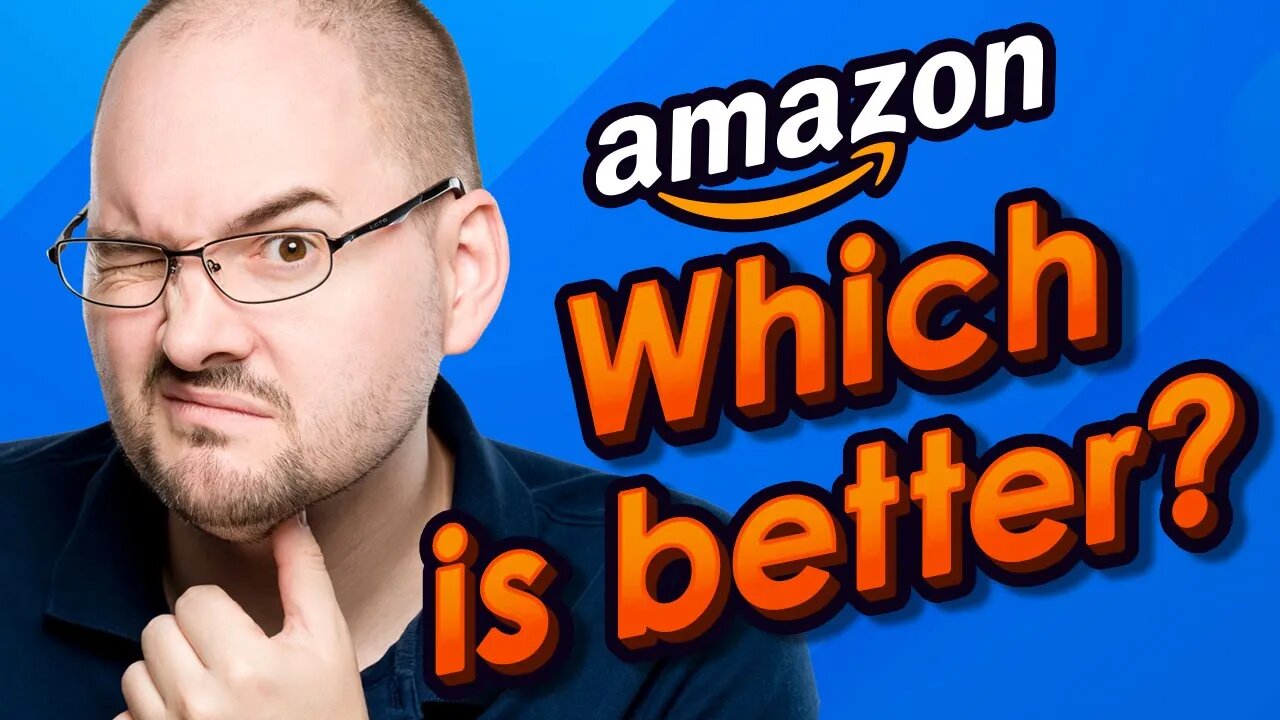Premium Only Content

Amazon FBM vs. FBA: Which Is the Right Choice for Your Launch Period?
Wondering what to do when you run out of stock on FBA? Steven Pope, founder of My Amazon Guy, shares a solution that could help you fulfill orders quickly and efficiently using FBM. Whether you're just starting out with limited inventory or have larger inventory and want to leverage Amazon's fulfillment services, this video will provide you with valuable insights and tips to help you make an informed decision.
In this video, Steven talks to an Amazon seller who has run out of stock for their product on Amazon. The seller has a few hundred units left in their local warehouse, and they're wondering what to do to fulfill orders until they restock with FBA. Steven suggests that the seller creates a duplicate SKU for the same ASIN and lists the units as FBM, so they can fulfill orders from their warehouse. He explains that it's perfectly normal to have multiple fulfillment options for the same product, and it's completely white hat.
Steven demonstrates how to add stock quantity to FBM and how to process orders through the Seller Central app. He shows how he manages his 4,000 FBM orders per month, and he explains how to print out the shipping label and ship the order out using USPS or other shipping carriers. Steven advises the seller not to invest in equipment yet, but to print out regular sheets of paper and tape them on boxes until they fulfill enough orders to justify buying a Rolo printer.
The video is all about Amazon FBM vs. FBA and which is the right choice for your launch period. Steven highlights the benefits of FBM, such as having control over inventory and fulfillment, and the ability to fulfill orders quickly without relying on Amazon's FBA service. However, he also notes that FBM comes with its own set of challenges, such as the need to manage shipping and handling, customer service, and returns. On the other hand, FBA offers the convenience of Amazon's fulfillment services, including Prime eligibility, and customer trust in Amazon's fulfillment process. But, FBA also has its drawbacks, such as higher fees, limited control over inventory, and the risk of long-term storage fees.
Steven suggests that the right choice between FBM and FBA depends on the individual seller's goals, resources, and priorities. If you're just starting out with limited inventory and want to maintain control over fulfillment, FBM might be the best option for you. However, if you have larger inventory and want to leverage Amazon's fulfillment services and customer trust, FBA might be the way to go. Either way, it's important to understand the pros and cons of each option and make an informed decision that aligns with your business goals.
-
 15:03
15:03
Demons Row
8 hours ago $10.44 earnedThings Real 1%ers Never Do! 💀🏍️
39.7K15 -
 35:27
35:27
megimu32
11 hours agoMEGI + PEPPY LIVE FROM DREAMHACK!
160K12 -
 1:03:23
1:03:23
Tactical Advisor
15 hours agoNew Gun Unboxing | Vault Room Live Stream 044
241K36 -
 19:12
19:12
Robbi On The Record
16 hours ago $21.00 earnedThe Loneliness Epidemic: AN INVESTIGATION
73.9K98 -
 14:45
14:45
Mrgunsngear
1 day ago $136.48 earnedFletcher Rifle Works Texas Flood 30 Caliber 3D Printed Titanium Suppressor Test & Review
127K29 -
 17:17
17:17
Lady Decade
1 day ago $10.67 earnedMortal Kombat Legacy Kollection is Causing Outrage
83.8K17 -
 35:51
35:51
Athlete & Artist Show
1 day ago $14.16 earnedIs Ryan Smith The Best Owner In The NHL?
95K13 -
 22:56
22:56
American Thought Leaders
2 days agoCharles Murray: I Thought Religion Was Irrelevant to Me. I Was Wrong.
77.7K39 -
 36:22
36:22
Brad Owen Poker
17 hours agoGIGANTIC $17,000+ Pot In BOBBY’S ROOM! TRAPPING Top Pro w/FULL HOUSE!! Big Win! Poker Vlog Ep 326
81.4K9 -
 3:53
3:53
GreenMan Studio
1 day agoRUMBLE RUNDOWN: DREAM HACK SPECIAL W/Greenman Reports
65.5K13